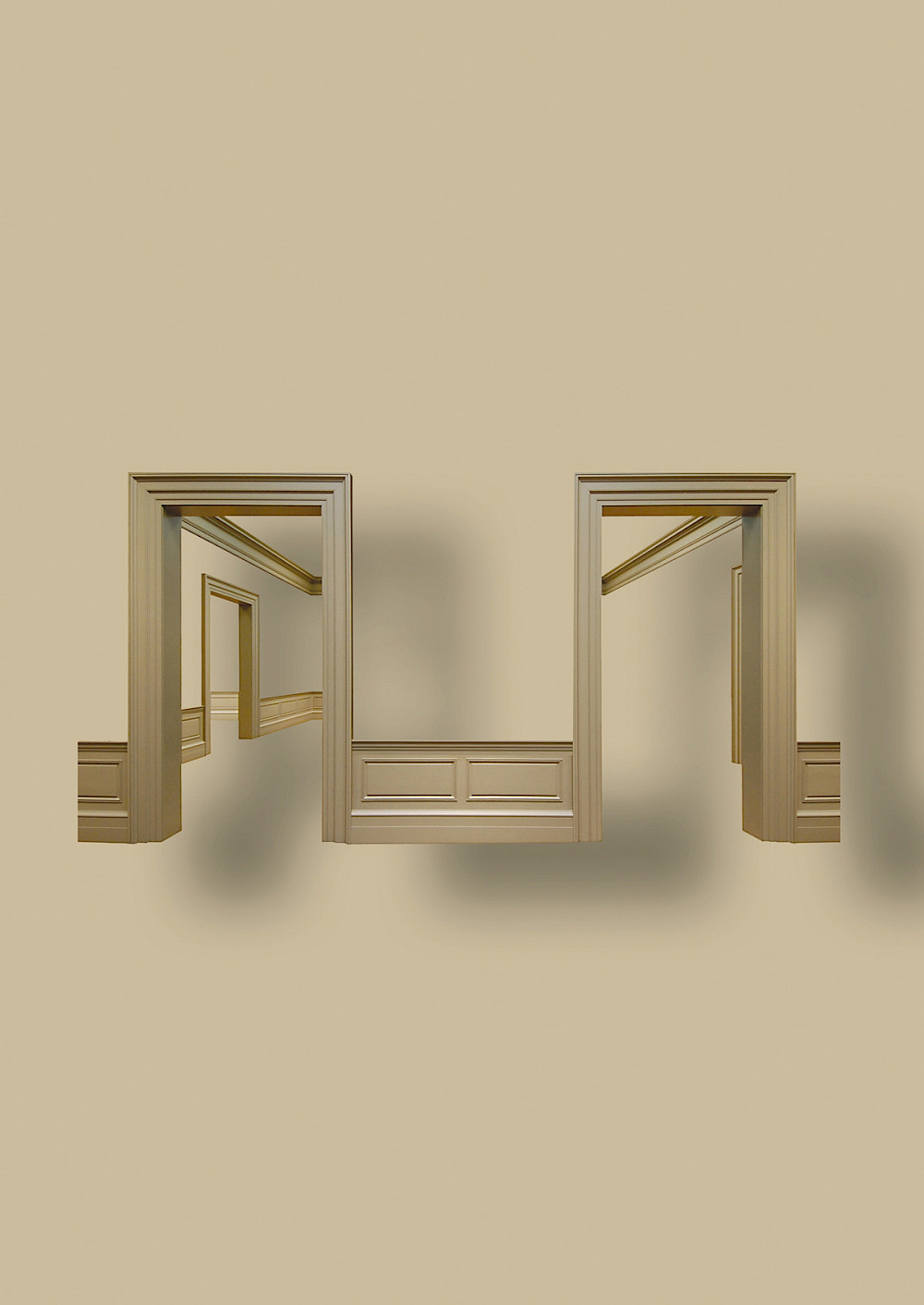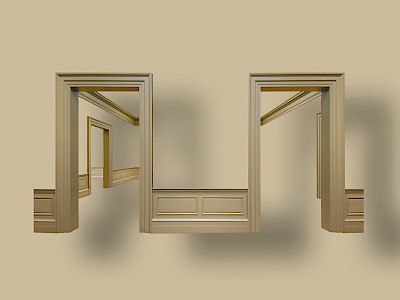08 — 15.05.2011
Walid Raad Beirut / New York
Scratching on Things I Could Disavow: A History of Art in the Arab World
performance / exhibition
English, French | ⧖ 50min | Performance in French by Carlos Chahine: 15/05 – 17:00 + 8, 9, 11, 13, 15/05 – 19:00 + 10, 12, 15/05 – 21:00 | Performance in English by Walid Raad: 8, 13, 14/05 – 17:00 + 10, 12, 14/05 – 19:00 + 9, 11, 13, 14/05 – 21:00
Walid Raad became famous as the founder of the Atlas Group, an imaginary collective concerned with archiving traces left by the civil wars in Lebanon. His work is based on a reflection on possible representations of a country at war. His latest project, a political and aesthetic fable taking the form of an exhibition-performance, questions the place of artistic creation in the Arab world. In a vast space that is somewhere between a white cube and a black box, the artist – or his double – takes us round an exhibition, using the works to narrate a series of stories to us. They concern a pension fund for artists, huge projects by museums in the Gulf or even forms and colours “lost” during the conflicts in Beirut… Weaving a labyrinthine network of links between aesthetics, economics and politics, the stories tip over into dream and fiction, to the point where works of art decide to conceal themselves from the world. With this new creation, Raad delivers an unspeakably poetic manifesto of resistance to the erosion of memories, forms, liberties and thoughts. Superb!
Interview with Walid Raad
You ended The Atlas Group archives project in 2005. Can we talk about your current research and its connection with your previous projects?
I continue to work on The Atlas Group even though the project was declared closed in 2004. Today I consider The Atlas Group not only as a project, but also as a particular way of thinking and composing documentation on the wars in Lebanon. When I make a work and find its logic relevant to The Atlas Group, I backdate its production to between 1989 and 2004. For example, two jobs I completed this year and that pertain to the Atlas Group have been dated 1989 and 1995. I also continue to work on my longterm-project entitled Sweet Talk: Beirut Commissions, begun in 1987 and consisting of a series of self-attributed photographs in Beirut. And my latest project, entitled Scratching Things I Could Disavow is linked to the history of art in the Arab world, particularly Lebanon, to the accelerated development of new infrastructures dedicated to the visual arts in Abu Dhabi, Qatar, and elsewhere in the Gulf, to technological innovations in the fields of statistics, data mining and finance, manifested in databases dedicated to art and artistic foundations. It relates to the development of the high-tech sector in Israel over the past twenty years and implies the books and concepts of Jalal Toufic. In Paris it will take the form of an exhibition-performance. Most of the work I’ve produced for this exhibition-performance takes the form of performance spaces, works, and three-dimensional holograms.
The archives of The Atlas Group and their ”hysterical documents” echoed the ”white traumatic”, the impossibility of locating the violence that occurs after the disaster. It was a way of registering the direct and collateral damages of war, beyond the immediate material and human accounts: fear, mental error, the internal dismantling of the structures of civil society.
The language of “trauma” and certain psychoanalytic conceptions of violence were central to the Atlas Group and still are. Today I am equally interested in other ways to envisage violence and its various effects. My interest in these other approaches is related to, among other things, certain encounters with spaces, economies, concepts and people. On this point, the works of Jalal Toufic have been central. In addition, some unusual experiences I had with my work in Beirut, with The Atlas Group, encouraged me to explore other ways of thinking about how violence affects bodies, minds, cities and time. For example, in 2005, Andrée Sfeir, who owns a gallery in Hamburg and in Beirut, asked me to present The Atlas Group archives in her new white cube in Karantina (Beirut). At the time I refused, because I intuitively felt that the Atlas Group was no longer accessible and that in that state, I could not present the work.
Can you clarify this idea?
I had the impression that the photographs, videotapes, texts and sculptures that made up the Atlas Group Archive had been affected in some strange way; I felt that at the time the works would be presented in the gallery (if they were), they would appear to my eyes, and maybe everyone else’s, to be 1/100th of their original size. I was convinced that the works would shrink once exposed in Beirut. Or rather (and I know this seems to contradict what I just said), that for my works to appear their proper size, I would first have to reduce them to 1/100th of their original size. And although the significance of this was unclear to me, the feeling was strong enough for me to refuse to mount the works in Lebanon in 2005. The work that resulted from this experiment will be presented in Paris in November. It is entitled The Atlas Group (1989-2004) and shows The Atlas Group works at 1/100th of their original size, presented in a space (a miniature model of a gallery or a museum) appropriate to their new dimensions. The space itself, the scale model, combines several places where I exposed the Atlas Group Archive in the past: the Hamburger Bahnhof in Berlin, the Sfeir Semler Gallery in Beirut, Culturgest in Lisbon.
Your project Scratching on Things I Could Disavow: A History of Art in the Arab World includes architectural interior views of empty modern museums that you show here in the form of three-dimensional holograms. Besides this you also expose lists of the names of artists who lived in Lebanon at the end of the 19th century and during the 20th. Are these lists there to evoke, or even resurrect a modern Lebanese tradition since forgotten? Do you consider these artists your precursors?
The work to which you refer is a list of names of “artists” who lived and worked in Lebanon in the 19th and 20th century. The names are formed using three layers of white vinyl paint on a white wall and arranged next to one another. The list of names does not follow a chronological or alphabetical order. It begins with the word ”and” and ends with the same word ”and”. In this piece, I affirm that the artists of the future have telepathically communicated these names to me and that, given my experience with the type of “noise” that accompanies telepathic reception, I make this list public in the hope that any nuisance (spelling or otherwise) can be identified. And actually, it so-happens that I have received some names with the wrong spelling. With this work, I leave it to others to notify me of such errors. The notification may take-on different forms, as when in July 2008, a so-called art critic corrected the name of a painter that I had misspelled, using red ink on my white wall. I consider such corrections an incentive to discover more about the artists whose names I received in a distorted way. Initially, I was truly convinced that the future artists had assumed the task of reminding me of my predecessors and their works. But, it turned out that in communicating these distorted names to me telepathically, their business was quite different. The artists of the future are more interested in reviving some of the lines, colours, shapes and contours, to keep alive the works of certain painters, sculptors, photographers and filmmakers who lived and worked in Lebanon in the 20th century.
And why is it more urgent to revive the plans, lines, colours (such as you expose them by taking extracts from books, posters or academic theses on the history of art in Lebanon), rather than the names and the works?
I should be careful because I’m not at all sure whether in this work I operate on names, a revival of lines, colours, contours and forms, or a resuscitation of these elements, or, more simply, if I make them accessible for the first time. But my general intuition is that certain colours, lines, contours and forms have been affected in immaterial ways. Not that they are inaccessible to artistic creation, but that they are accessible in an altered and disguised form, and/or they’re hidden. With this in mind, I tried to be attentive to the growing number of catalogues, monographs, theses and exhibitions on modern and contemporary “Arab” visual art. I noted the number of associations, university departments, collections and awards dedicated to ”Arab” art. I have been alert to the increasing efforts of academics, curators, gallery owners, vendors, auction houses, and many others, to organise a timeline of genres, movements and ideas of ”Arab” art and to complete the grueling task that consists of collecting, preserving, indexing and disseminating the reproductions. I think these efforts are rich, not so much because of what they make available, but for the fact that they tend to produce the type of noise that forces the colours, lines, contours and forms to resurface.
Interview by Hélène Chouteau
Translation into French by Barbara Turquier and Hélène Chouteau
English translation by Jodie Hruby
Concept
Walid Raad
Concept/production support
Herman Sorgeloos, Rémi Vidal, Raphael Fleuriet, Celesta Rottiers, Ryan Garrett, Lucien Samaha, Kristine Khouri, Mores McWreath, Situ Studio, Jalal Toufic & Carlos Chahine
With
Carlos Chahine & Walid Raad
Presentation
Kunstenfestivaldesarts, Halles de Schaerbeek
Production
Walid Raad
Executive production
Klein verzet vzw (Brussels)
Coproduction
Kunstenfestivaldesarts, Les Halles (Brussels), Wiener Festwochen, Thyssen-Bornemisza Art Contemporary (Vienna), Hebbel am Ufer (Berlin), Festival d’Automne a Paris, Le CENTQUATRE (Paris)
Supported by
Sfeir-Semler Gallery (Hamburg/Beirut), Anthony Reynolds Gallery (London), Paula Cooper Gallery (New York), Centre national des arts plastiques (Paris), Ville de Paris, Ministere des Affaires étrangeres et européennes (Paris)
Walid Raad was artist in residence at CENTQUATRE & Couvent des Récollets
Special thanks to
Les Brigittines


